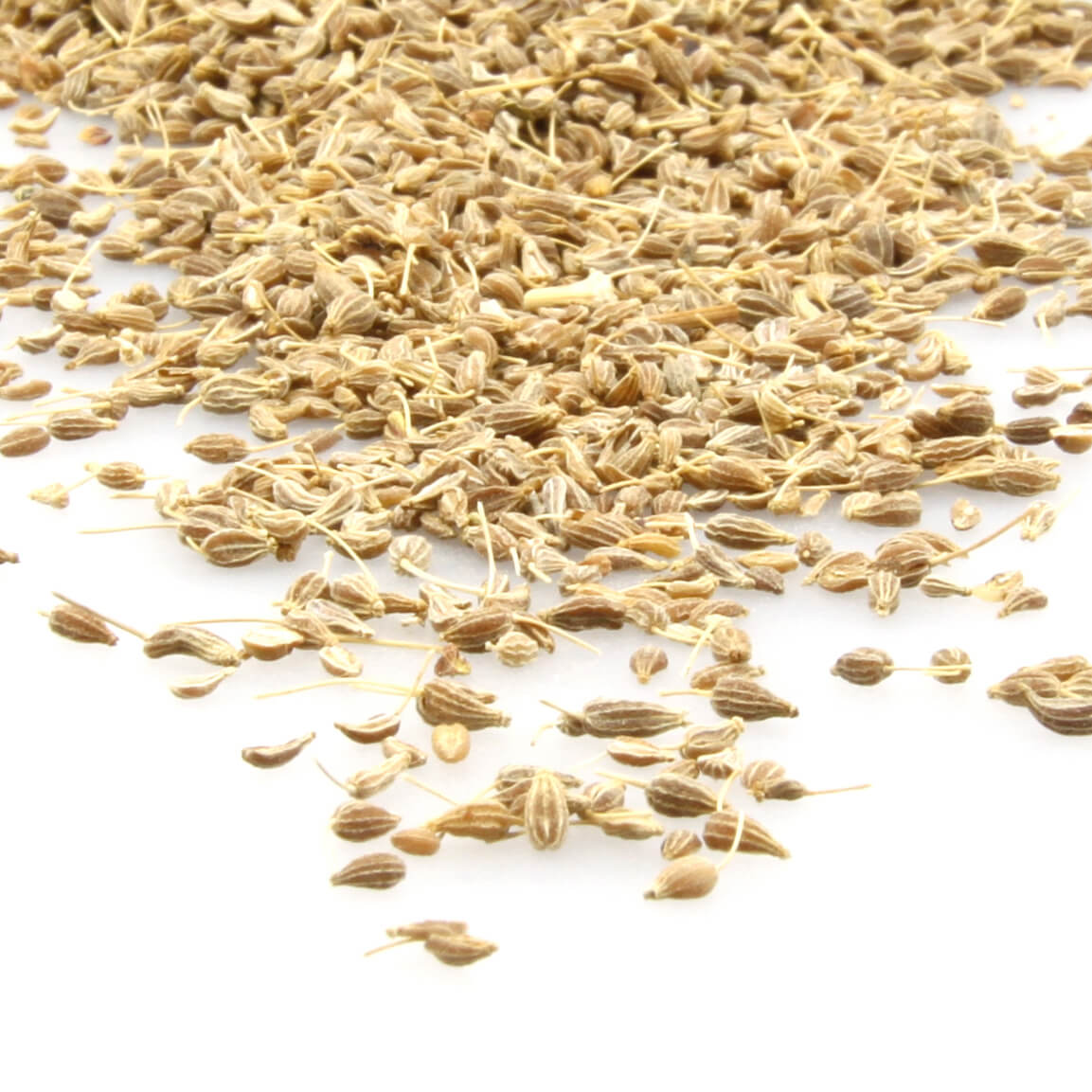Anis
-
General information
-
Use
-
Things to know

Botanical name:
Pimpinella anisum L.
Synonyms:
sweet caraway, bread seeds
Botanical family:
umbelliferous plants
origin:
Mediterranean region, Orient
Classification:
spice
spice shape:
fruits
flavor:
sweetish (reminds of liquorice)
odor:
spicy
use:
Baking and cake spice especially in the Christmas season (e.g. aniseed cookies, gingerbread etc.), breads, fruit salads, plum puree, sauces, soups and vegetable dishes, preserving spice, liqueurs, e.g. aniseed schnapps
tip:
Grind or pound in a mortar so that the full aroma can unfold
knowledge:
Medicine: Known for its appetite and digestive properties
Recipe suggestion:
Anism macaroons:
Beat 2 egg whites until stiff on highest setting. Slowly stir in 100 g sugar. Add some lemon zest and 1 tsp. aniseed. Pour small heaps onto a baking tray lined with baking paper and bake for 1 1/2 hours at 100° in a preheated oven on the middle shelf.
Botany:
Like dill, fennel, caraway and coriander, anise belongs to the species-rich family of umbellifers. The annual herbaceous plant grows about 50 to 60 cm high, has long-stemmed, roundish and serrated leaves at its base, which are shorter-stemmed and deeply split further up. From the small, white flowers in typical umbels, characteristic egg-shaped double-split fruits are formed. They are 3 to 6 mm long, 2.0 to 2.5 mm wide and mostly still hang from their 2 to 12 mm long thin stem. Depending on their origin, their color varies from light gray-green to gray-brownish.
Home & Spread:
The exact home of the anise plant is not known. It probably comes from the Orient and is a cultivated plant that has been known for a long time in the Mediterranean countries. Today, anise is cultivated on a large scale, especially in Spain and Italy. But anise is also widespread in southern France, Germany, the Balkan countries, Turkey, Russia and India as well as in Central and South America.
cultivation & extraction:
In some countries, aniseed is grown for the local cuisine in the herb garden. However, the large-scale cultivation takes place in field farming. Harvesting takes place when the fruits of the central umbels turn brown and the stems turn yellow. The fruits are then dried.
History:
Anise was already known in ancient times in Egypt, Syria, Greece and Cyprus as a medicinal and spice plant. Mentions of it in Egyptian papyrus scrolls around 1,500 BC as well as in the writings of Greek and Roman authors, including Dioscurides and Pliny the Elder. With the Benedictines, anise also came over the Alps during the reign of Charlemagne. In old German herbal books, the aromatic anise seed is said to have many healing effects.
http://de.wikipedia.org/wiki/Anis







